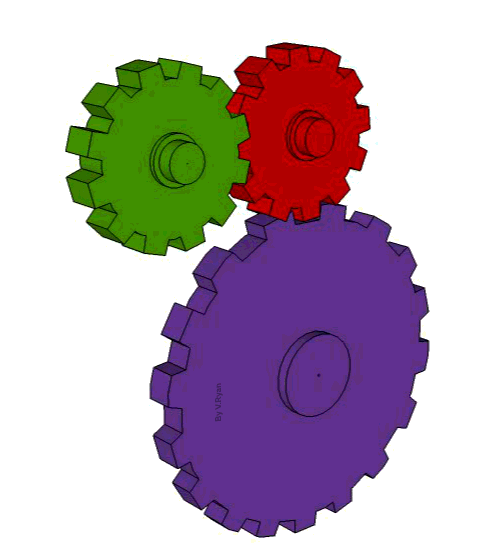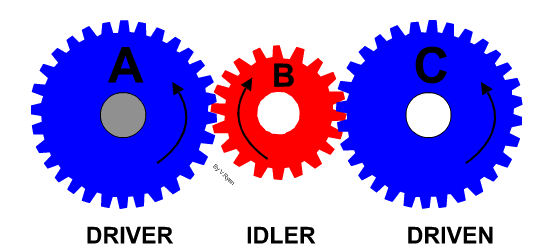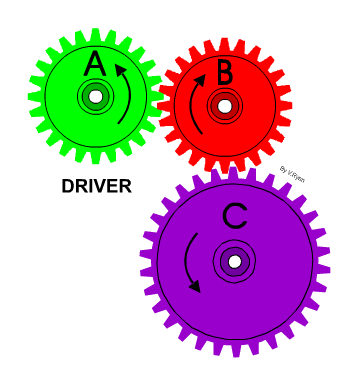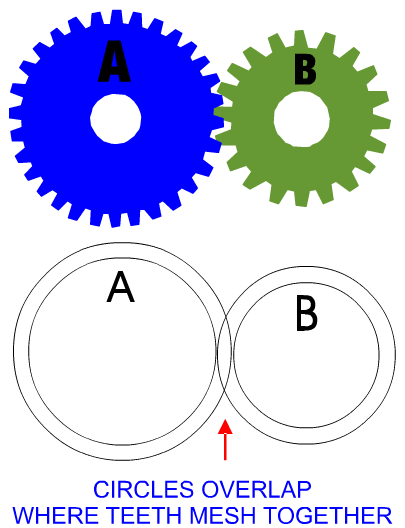| CLICK HERE FOR INDEX PAGE | ||
| GEARS AND GEAR SYSTEMS | ||
| V. Ryan © 2001 - 2024 | ||
| PDF FILE - CLICK HERE FOR PRINTABLE VERSION OF EXERCISE SEEN BELOW | ||
 |
||
|
GEAR TRAINS |
||
|
|
A gear train is a mechanical system, composed of at least two gears. Gear trains can increase torque, reduce or increase speed and change the direction of rotation. They are used in machines and even power tools. This is a good example of a
‘gear train’. A gear train is usually made up of two or more gears. The
driver in this example is gear ‘A’. If a motor turns gear ‘A’ in an
anticlockwise direction; |
|
|
An idler gear is postioned between two other gears to transmit motion from one to the other. Its main function is to change the direction of rotation (see below). So far you have read about ‘driver’ gears, ‘’driven’ gears and gear
trains. An ‘idler’ gear is another important gear. In the example below, gear ‘A’ turns in an
anticlockwise direction and also
gear ‘C’ turns in an anticlockwise direction. The ‘idler’ gear is used so
that the rotation of the two important gears is the same. |
||
 |
||
| In one sentence explain what an ‘idler’ gears does. | ||
|
DRAWING GEARS It would be very difficult to draw gears if you had to draw all the teeth every time you wanted to design a gear system. For this reason a gear can be represented by drawing two circles. |
||
|
|
||
|
|
||

